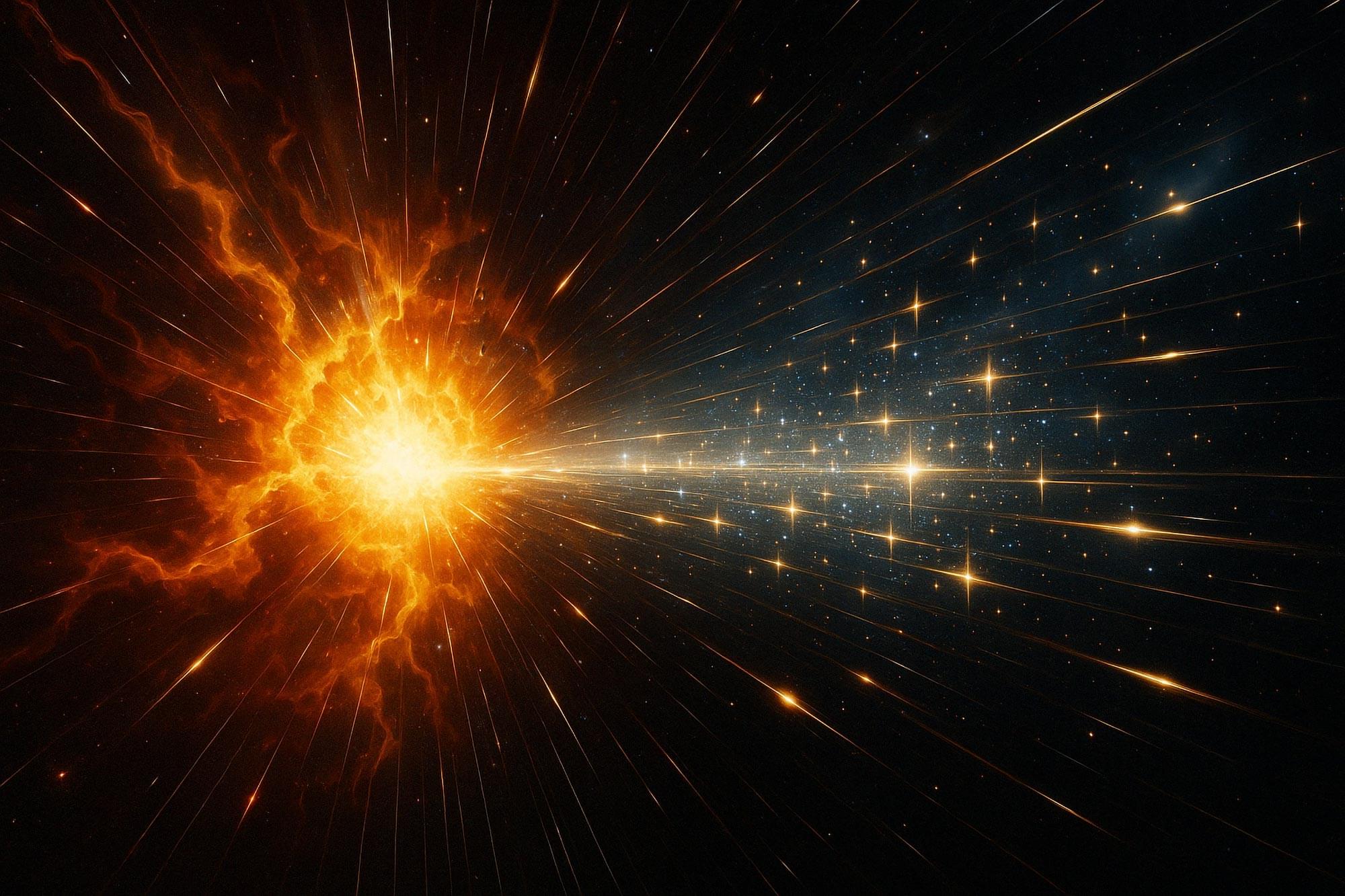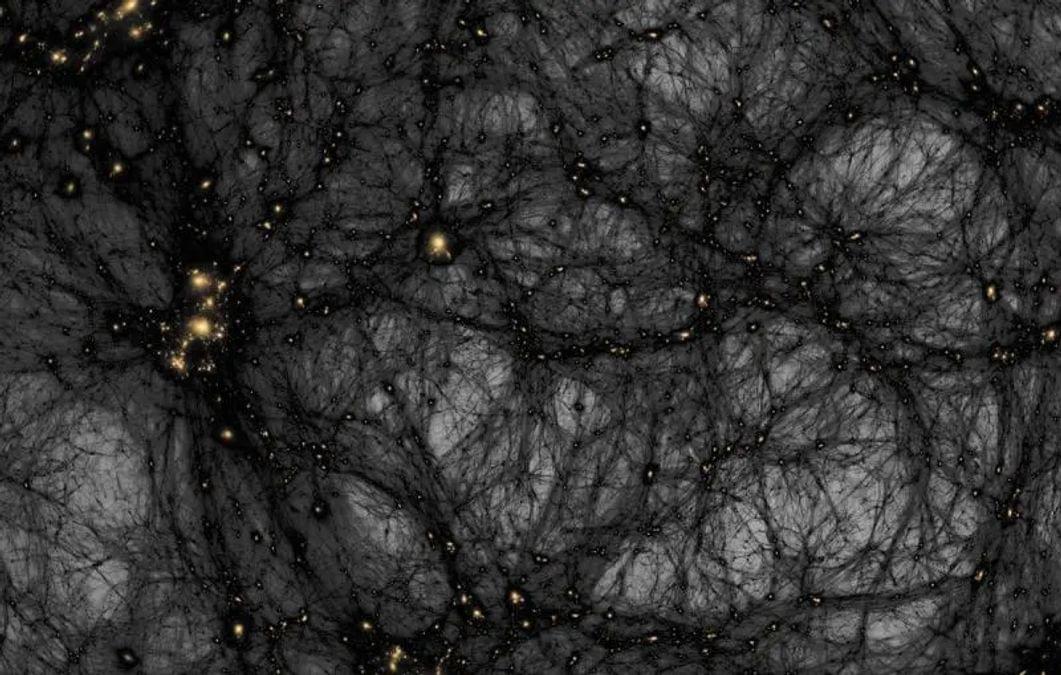Researched and Written by Leila BattisonNarrated and Edited by David KellyThumbnail Art by Ettore MazzaIf you like our videos, check out Leila’s Youtube chan…
Category: cosmology – Page 41

Two AIs Discuss: The Construct of Science, a Metaphysical Inquiry!
“Metaphysical Experiments: Physics and the Invention of the Universe” by Bjørn Ekeberg Book Link: https://amzn.to/4imNNk5
“Metaphysical Experiments, Physics and the Invention of the Universe,” explores the intricate relationship between physics and metaphysics, arguing that fundamental metaphysical assumptions profoundly shape scientific inquiry, particularly in cosmology. The author examines historical developments from Galileo and Newton to modern cosmology and particle physics, highlighting how theoretical frameworks and experimental practices are intertwined with philosophical commitments about the nature of reality. The text critiques the uncritical acceptance of mathematical universality in contemporary physics, suggesting that cosmology’s reliance on hypological and metalogical reasoning reveals a deep-seated faith rather than pure empirical validation. Ultimately, the book questions the limits and implications of a science that strives for universal mathematical truth while potentially overlooking its own inherent complexities and metaphysical underpinnings. Chapter summaries:
- Cosmology in the Cave: This chapter examines the Large Hadron Collider (LHC) in Geneva to explore the metaphysics involved in the pursuit of a “Theory of Everything” linking subatomic physics to cosmology.
- Of God and Nature: This chapter delves into the seventeenth century to analyze the invention of the universe as a concept alongside the first telescope, considering the roles of Galileo, Descartes, and Spinoza.
- Probability and Proliferation: This chapter investigates the nineteenth-century shift in physics with the rise of probabilistic reasoning and the scientific invention of the particle, focusing on figures like Maxwell and Planck.
- Metaphysics with a Big Bang: This chapter discusses the twentieth-century emergence of scientific cosmology and the big bang theory, shaped by large-scale science projects and the ideas of Einstein and Hawking.
- Conclusion: This final section questions the significance of large-scale experiments like the JWST as metaphysical explorations and reflects on our contemporary scientific relationship with the cosmos.
#Physics.
#Cosmology.
#Universe.
#Science.
#Metaphysics.
#PhilosophyofScience.
#JWST
#LHC
#BigBangTheory.
#DarkMatter.
#DarkEnergy.
#SpaceTelescope.
#ParticlePhysics.
#HistoryofPhysics.
#ScientificInquiry #scienceandreligion #meaningoflife #consciousness #universe #god #spirituality #faith #reason #creationtheory #finetuninguniverse #astrophysics #quantumphysics #intelligentdesign #cosmicconsciousness #reality #Consciousness #QuantumPhysics #Universe #Nonlocality #QuantumEntanglement #CosmicInformation #ScienceOfMind #NatureOfReality #Spirit #BigLibraryHypothesis #NLSETI #QuantumBrain #Multiverse #InformationTheory #ExtrasensoryPerception #SciencePhilosophy #deepdive #skeptic #podcast #synopsis #books #bookreview #ai #artificialintelligence #booktube #aigenerated #history #alternativehistory #aideepdive #ancientmysteries #hiddenhistory #futurism #videoessay

Scientists improve gravitational wave identification with machine learning
A study published in Physical Review Letters outlines a new approach for extracting information from binary systems by looking at the entire posterior distribution instead of making decisions based on individual parameters.
Since their detection in 2015, gravitational waves have become a vital tool for astronomers studying the early universe, the limits of general relativity and cosmic events such as compact binary systems.
Binary systems consist of two massive objects, like neutron stars or black holes, spiraling toward each other. As they merge together, they generate ripples in spacetime—gravitational waves—which give us information about both objects.
600,000 times bigger than our Sun, a hidden black hole is moving closer to our galaxy
Astronomers have recently identified a colossal black hole lurking in the shadows of our cosmic neighborhood. This celestial giant, estimated to be 600,000 times more massive than our Sun, resides in the Magellanic Clouds and is gradually approaching the Milky Way. The discovery has sparked significant interest among scientists who are now contemplating the potential consequences of an eventual collision between our galaxy and this massive cosmic entity.
A team of researchers from the Harvard & Smithsonian Center for Astrophysics has detected compelling evidence of a supermassive black hole within the Magellanic Clouds. These findings, published in The Astrophysical Journal on April 7, 2025, reveal a cosmic giant that dwarfs our Sun by a factor of 600,000 in terms of mass. The black hole’s enormous gravitational influence has long remained hidden from direct observation.
The Magellanic Clouds consist of two satellite galaxies orbiting our Milky Way at a distance of approximately 160,000 light-years. Their gradual approach toward our galaxy suggests an eventual merger that could dramatically reshape our cosmic neighborhood. Scientists are particularly concerned about the fate of this newly discovered black hole during such a collision event.
Quantum Maze!? The Supermaze Hypothesis Explained!
Are black holes really cosmic shredders—or are they complex quantum structures storing everything they consume? Discover the revolutionary Supermaze Hypothesis and Fuzzball Theory in this deep dive into black hole physics, quantum mechanics, and string theory. This could change everything we know about the universe!
Paper link : https://arxiv.org/abs/2312.
Chapters:
00:00 Introduction.
00:44 Inside the Supermaze – A New Perspective from String Theory.
02:42 The Fuzzball Revolution – Solving the Information Paradox.
04:43 Scientific Debate and the Road to the Theory of Everything.
06:57 Outro.
07:16 Enjoy.
MUSIC TITLE: Starlight Harmonies.
MUSIC LINK: https://pixabay.com/music/pulses-star… our website for up-to-the-minute updates: www.nasaspacenews.com Follow us Facebook: / nasaspacenews Twitter:
/ spacenewsnasa Join this channel to get access to these perks:
/ @nasaspacenewsagency #NSN #NASA #Astronomy#BlackHole #SupermazeHypothesis #FuzzballTheory #QuantumPhysics #StringTheory #MTheory #EventHorizon #HawkingRadiation #InformationParadox #CosmicMysteries #QuantumGravity #Branes #QuantumMaze #PhysicsExplained #SpaceTime #BlackHoleTheory #Astrophysics #Cosmology #QuantumUniverse #TheoryOfEverything #BlackHoleInfoParadox #StephenHawking #SamirMathur #NicholasWarner #QuantumEntanglement #ScienceExplained #GravitationalWaves #LIGO #EventHorizonTelescope #QuantumReality.
Visit our website for up-to-the-minute updates:
www.nasaspacenews.com.
Follow us.
The universe: How will it end?
The Big Bang likely brought our universe into existence. What will mark its grand finale? Scientists blend imagination and data to make predictions.

A Physicist Says Singularities—Not Dark Energy—May Actually Be Why the Universe Is Expanding Faster
Physicist Richard Lieu first explored the idea that gravity could exist without mass—now he’s got a new cosmological model that eschews the need for dark energy.

Dark matter could make planets spin faster
Dark matter is a confounding concept that teeters on the leading edges of cosmology and physics. We don’t know what it is or how exactly it fits into our understanding of the universe. We only know that its unseen mass is a critical part of the cosmos.
Astronomers know dark matter exists. They can tell by the way galaxies rotate, by exploiting gravitational lensing, and by analyzing fluctuations in the Cosmic Microwave Background. But new research suggests that there might be another way to detect its presence.
The research is “Dark Matter (S)pins the Planet,” and it’s available on the arXiv preprint server. Haihao Shi, from the Xinjiang Astronomical Observatory at the Chinese Academy of Sciences, is the lead author. The co-authors are all from Chinese research institutions.